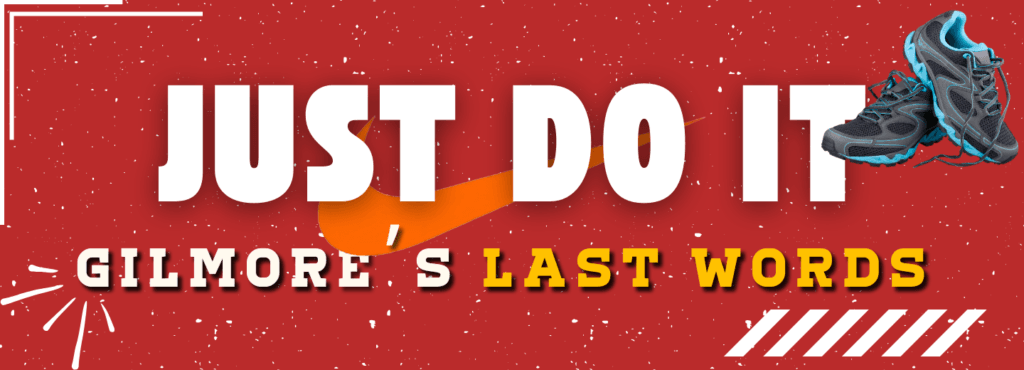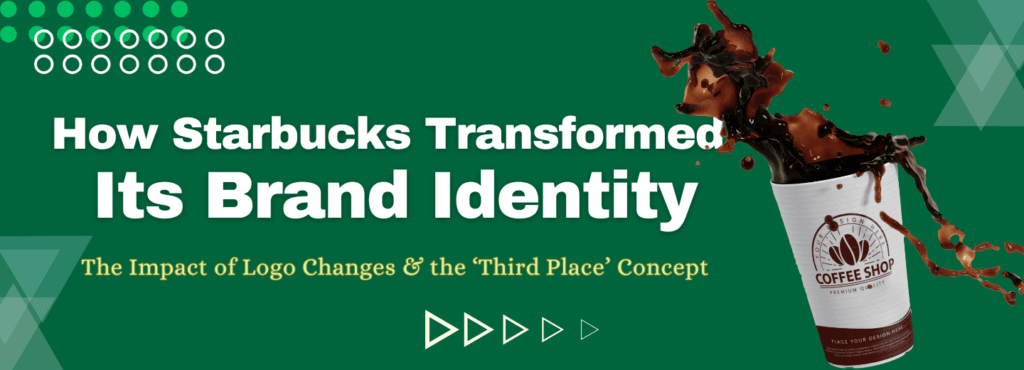From Chaos to Clarity: My Favorite eCommerce SEO Tools Right Now

When I first started working on eCommerce SEO, I did everything manually. From keyword research to product descriptions, every step felt like solving a new puzzle from scratch. It was fulfilling—but also exhausting. That’s when I started experimenting with eCommerce SEO tools. Not to replace strategy—but to scale smarter. These tools didn’t just save time. They helped me think better, write sharper, and rank faster. Today, I’m sharing 5 tools I use consistently to optimize listings across Amazon, Flipkart, Meesho, and WooCommerce stores. If you’re in the eCom space, these eCommerce SEO tools might just become your new best friends, too. 1. Google Keyword Planner: The Classic for Intent Even today, I start most of my research here. Google Keyword Planner helps me: Whether I’m working on product titles or marketplace backend keywords, this tool gives me clarity. 2. ChatGPT (with Plugins): My AI Listing Assistant I’ve used ChatGPT not just for idea generation—but for structured title drafts, rewriting descriptions, and even finding long-tail keyword gaps. Combine it with plugins like SEO Core AI or browser-based extensions, and it becomes a powerhouse. The key? You still need to feed it smart prompts. 3. Flipkart/Amazon Autocomplete: Real Search Insights This one might seem basic, but it’s a goldmine. I spend a few minutes typing seed keywords in search bars and noting the autocomplete suggestions. These are the real phrases buyers use. It helps me: 4. Canva & Glorify: Visuals That Support Search SEO isn’t just about words. Great listings also have clean, keyword-aligned product images. I use: Both tools are easy to use and perfect for eCom founders and marketers alike. 5. AlsoAsked & AnswerThePublic: Deep Keyword Mining When I want to build supporting content or FAQ sections for a product page, these tools help surface: Especially useful when scaling your content around a core product type. The Real Trick? Strategy Over Software I’ve tried more than 20 tools over time. But here’s what I’ve learned: eCommerce SEO Tools are only powerful when used with purpose. Don’t collect data for the sake of it. Use these tools to build a sharper point-of-view. Combine machine suggestions with buyer behavior and you’ll craft listings that don’t just rank—but convert. Whether you’re listing your first product or scaling your 100th SKU—these tools can give you a clear, strategic edge in the crowded world of eCommerce SEO. — 🔁 Missed Previous Blogs? 👉 Check out my previous posts on eCommerce & Marketplace SEO: Click Here 📚 Looking for more insights? Explore our growing library of blogs packed with practical tips, insights on marketing, design, web development, and more: Click Here 🔹Behind The Post? Hey 👋 I’m Rajiv — The Organic Architect eCommerce SEO & Web Strategist | ABN Junction 🌐 Explore my portfolio 🔗 Let’s connect & grow: The Organic Architect
Product Descriptions That Do More Than Describe: A Proven Approach

Product descriptions aren’t just words—they’re mini salespeople “Your product descriptions need work.” That’s what a client told me early in my journey. At first, I was confused. The product was live, the images looked great, and we had a decent title. But sales? They were embarrassingly low. So I clicked into the listing and read what I’d written: “Comfortable cotton T-shirt for men. Available in black and white. Size S to XL.” That was it. No emotion, no details, or no story. And most importantly—no real product description. That one feedback made me rethink everything I knew about writing listings. What product descriptions should actually do Let’s clear something up: Product descriptions aren’t there to just describe the product. They should: A good product description makes the customer go: “Yes, this is exactly what I was looking for.” If it doesn’t do that, you’re leaving money on the table. My 3-part formula for writing great product descriptions Here’s the structure I now follow for every listing—whether it’s a kurti, a jacket, or a pair of joggers. 🧩 Part 1: Start with a hook that speaks to the user’s desire Example: Tired of basic tees that lose shape after two washes? Our premium cotton T-shirt is built to last, feel soft, and stay sharp—all day long. 🧩 Part 2: Highlight benefits with keywords Crafted from 100% breathable cotton, this round-neck tee is perfect for casual outings, gym sessions, or just lounging at home. Lightweight, slim-fit, and sweat-resistant. You’ll notice I’ve naturally embedded product descriptions and high-intent keywords without sounding robotic. 🧩 Part 3: Close with confidence + size/fit guidance Available in classic black and white, sizes S to XL. Check our size guide to get your perfect fit. Simple, structured, human. How product descriptions helped improve conversions After rewriting product descriptions for just 12 SKUs in a men’s apparel brand, here’s what happened: No new images. No price changes. Just better storytelling using well-written product descriptions. Final thoughts If you’re in the eCommerce or marketplace game, remember: Don’t treat them as filler text. Treat them like your best salesperson. Trust me, the results are worth it. 🔁 Missed Day 2? 👉 Check out my Day 2 post where I shared how to create an optimized product title with a proven 3-part formula: Click Here 📚 Looking for more insights? Explore our growing library of blogs packed with practical tips, insights on marketing, design, web development, and more: Click Here 🔹Behind The Post? Hey 👋 I’m Rajiv — The Organic Architect eCommerce SEO & Web Strategist | ABN Junction 🌐 Explore my portfolio 🔗 Let’s connect & grow: The Organic Architect
Boost UX with This New WordPress Plugin for Smooth Transitions

WordPress plugin brings app-like speed—without app-like headaches It started with a question I didn’t expect from a client: “Can we make our WordPress site feel more like an app?” I paused. Not because it couldn’t be done—but because usually, that means one of two scary things: But just this week, something interesting landed from the WordPress Performance Team: a new WordPress plugin called View Transitions that does exactly what my client was asking for. Only this time, it’s lightweight. Native. And surprisingly easy. What this WordPress plugin does differently The View Transitions plugin adds smooth, native, animated transitions between pages—without touching your site’s core structure or turning it into a full-blown SPA. Instead of the usual hard reload when you click a link, this plugin lets pages fade in, slide out, or swap content gently—just like an app. It’s subtle, but it drastically improves how “fast” the site feels. Here’s what makes this plugin a big deal: In short: it’s all the front-end polish, with none of the SPA chaos. Why this matters for user experience (and conversions) I always tell clients: “Perceived speed matters more than actual speed.” A user who feels like your site is fast is more likely to: This WordPress plugin makes that possible by removing the visual jolt of full-page reloads. It’s the kind of UX improvement that feels small—until you try it and suddenly everything feels smoother. For WooCommerce sites, blogs, and service businesses—it’s a win. Should you use the View Transitions plugin? If you want your WordPress site to feel: Then yes. Try it. It’s still experimental, but that just means you get to be ahead of the curve. And if you’re managing client sites like I am, this could quietly become your new favorite trick. Check out Felix Arntz’s latest blog post. Click Here. 👉 Here’s the plugin if you want to explore it. 📚 Looking for more insights? Explore our growing library of blogs packed with practical tips, insights on marketing, design, web development, and more: Click Here 🔹Behind The Post? Hey 👋 I’m Rajiv — The Organic Architect eCommerce SEO & Web Strategist | ABN Junction 🌐 Explore my portfolio 🔗 Let’s connect & grow: The Organic Architect
Product Title Optimization That Converts: A Proven 3-Part Formula

The T-Shirt That Taught Me More Than Any SEO Course One of the first apparel listings I worked on was… rough. 😅 It was a men’s t-shirt. Great fabric, trendy design, priced just right. But the title? “T-Shirt Men” That’s it. I chuckled at first. Then I realized—this is more common than you’d think. So I rewrote it: “Men’s Cotton Round Neck T-Shirt – Black | Half Sleeve, Slim Fit, Casual Wear” No change in pricing. No ads. Just a better title. In 6 days, the listing jumped from page 4 to page 1 for 3 high-intent keywords.The lesson? Titles sell. Titles rank. Titles matter. What Marketplaces Want from Product Title Optimization Unlike web SEO, where you’re ranking for guides or articles, marketplaces want: Marketplaces like Amazon, Flipkart, and Meesho don’t reward creativity.They reward clarity and context. An apparel product title optimization should tell a shopper: My 3-Part Product Title Optimization Formula Here’s the product title optimization I’ve used for apparel listings across men’s, women’s, and kids’ wear: 🧩 Part 1: Gender + Product + Style “Men’s Cotton Round Neck T-Shirt” 🧩 Part 2: Color + Fit + Sleeve/Length “– Black | Slim Fit | Half Sleeve” 🧩 Part 3: Occasion or Use + Size Info “– Casual Wear | Size M to XXL” 💡 Final Title: “Men’s Cotton Round Neck T-Shirt – Black | Slim Fit, Half Sleeve – Casual Wear | Size M to XXL” Before & After: Real Marketplace Example Before “Kurti Women Pink” After “Women’s Rayon A-Line Kurti – Pink | 3/4 Sleeve, Flared Fit – Ethnic Wear | Sizes S to XXL” Final Thoughts: Apparel Titles Are Micro-Conversations You don’t get a second chance in a product listing. An apparel title isn’t just SEO—it’s a customer asking, “Is this what I want?” and your title answering, “Yes, and here’s why.” If you’re listing clothing: One well-structured title can turn your inventory into bestsellers. ✅ Product Title Optimization Recap: 🔁 Missed Day 1? 👉 Check out my Day 1 post where I shared how I got started with e-commerce SEO and why marketplaces need a different SEO playbook: Click Here 📚 Looking for more insights? Explore our growing library of blogs packed with practical tips, insights on marketing, design, web development, and more: Click Here 🔹Behind The Post? Hey 👋 I’m Rajiv — The Organic Architect eCommerce SEO & Web Strategist | ABN Junction 🌐 Explore my portfolio 🔗 Let’s connect & grow: The Organic Architect
The Marketplace SEO Playbook: How to Rank & Convert Faster

Wait… SEO Is Not Just Google? Let me tell you a little story. Back in my early days managing SEO for service-based WordPress sites, I thought I had it all figured out—keywords, meta tags, backlinks, sitemaps… You know, the usual suspects. Then I stepped into the wild world of marketplaces like Amazon and Flipkart, and suddenly, the SEO Gods laughed. Because guess what? Marketplace SEO plays by completely different rules. It’s like trying to play cricket with football strategies—you might get a few hits, but good luck scoring a goal. Algorithm Differences: The Marketplace SEO Unlike Google, which looks at backlinks, domain authority, and E-E-A-T (Experience, Expertise, Authoritativeness, Trustworthiness), marketplaces like Amazon or Meesho are laser-focused on sales velocity, click-through rate (CTR), conversion rate, and fulfillment. In marketplaces: Basically, it’s SEO meets CRO (Conversion Rate Optimization), with a little dash of customer service. Keyword Strategy = Behavioral Psychology On Google, people search to learn. On marketplaces, they search to buy. This changes everything. Let’s say someone searches for “wireless headphones” on Flipkart. They’re not looking for blog posts. They want something that: You can’t just “rank”—you have to “convert”. That’s why I say marketplace SEO is 50% data, 50% intuition, and 100% focused on revenue. Real Talk: What Worked for Me I once worked on optimizing 500+ SKUs for an apparel brand selling on Amazon, Flipkart, and Meesho. Before: After: End result? CTR went up by 38%, and daily sales almost doubled in 21 days. Marketplace SEO – It’s Not Hard, Just Different So if you’re jumping from website SEO to marketplace SEO, leave your old playbook at the door. Marketplace SEO is a high-speed, algorithm-driven, buyer-behavior-sensitive beast—and once you learn to ride it, the growth is exhilarating. And trust me—once you start getting your first few listings ranked and converted, it becomes addictive. ✅ Key Takeaways:
The evolution of The Apple logo turned a simple fruit into a tech empire’s symbol

Apple Inc. has always been synonymous with innovation and creativity. Yet, behind its sleek products and groundbreaking campaigns are some fascinating stories that helped shape the tech giant into the brand we know today. Let’s dive into the intriguing evolution of The Apple logo and the impactful “Think Different” campaign that revitalized the company. Evolution of The Apple Logo: From Cherry to Icon The story of the Apple logo is as captivating as the brand itself. In the early days, Apple’s logo was designed by Rob Janoff in 1977. Originally, Janoff presented a logo with a full apple, but feedback suggested it looked more like a cherry than an apple. To address this and make the logo more distinctive, Janoff made a simple but crucial modification—he added a bite mark to the apple. Why the Bite? The bite served multiple purposes: The result was an instantly recognizable icon that perfectly represented Apple’s blend of simplicity and innovation. The Crisis: Apple’s Struggle in the 1990s Fast forward to the late 1990s, Apple faced a significant challenge. The company was struggling with declining sales and a tarnished brand image. Despite their innovative products, they were losing their edge and needed a new direction to re-establish their identity. The Breakthrough: “Think Different” Campaign In 1997, Apple launched the “Think Different” campaign, a pivotal move that helped turn the company around. The campaign was developed by the advertising agency TBWA\Chiat\Day and was designed to celebrate the unconventional thinkers who changed the world. The Campaign’s Essence The “Think Different” campaign wasn’t just about promoting Apple’s products—it was about celebrating creativity and innovation. The campaign featured a series of ads with iconic figures such as Albert Einstein, Martin Luther King Jr., and Amelia Earhart. These personalities represented the spirit of challenging norms and thinking outside the box, which aligned perfectly with Apple’s own brand ethos. The Impact The “Think Different” campaign resonated deeply with consumers. It helped reframe Apple’s image from a struggling tech company to a visionary brand that embraced creativity and individuality. The campaign was a huge success, leading to increased sales and revitalizing Apple’s brand. Why These Stories Matter Both the evolution of the Apple logo and the “Think Different” campaign highlight the importance of branding and storytelling in a company’s success. The bite mark on the Apple logo and the inspirational message of the “Think Different” campaign both contributed to shaping Apple’s identity as a leader in innovation and creativity. Conclusion: Lessons from Apple’s Journey Apple’s stories remind us that small details, like a bite mark, and bold marketing campaigns can have a significant impact on a brand’s success. Whether it’s through iconic logos or groundbreaking advertising, the key is to stay true to your brand’s essence and embrace creativity. For more fascinating brand stories and insights, stay tuned to our blog!
How Old Spice’s Brand Transformation Captured a New Generation

Old Spice, once synonymous with traditional aftershave, has transformed into a brand known for its humor, creativity, and distinctive personality. This remarkable evolution is largely credited to the innovative work of Wieden+Kennedy, the same agency behind Nike’s legendary campaigns. Let’s dive into how Old Spice reinvented itself and the role Wieden+Kennedy played in this transformation. The Old Spice Legacy: From Traditional to Trendy Old Spice, founded in 1937, was long associated with a classic, somewhat outdated image. The brand was popular among older generations for its distinctive scent and traditional advertising. However, by the early 2000s, Old Spice needed a fresh approach to reconnect with younger audiences and redefine its brand identity. The Challenge Old Spice faced a significant challenge: How to revitalize a brand that was perceived as outdated and uninspiring. The solution required more than just a new product—Old Spice needed a complete brand overhaul that would resonate with a new generation of consumers. Enter Wieden+Kennedy: The Creative Magic In 2006, Wieden+Kennedy, the creative agency behind Nike’s groundbreaking “Just Do It” campaign, was brought on board to revamp Old Spice’s image. The agency’s challenge was to create a campaign that was not only memorable but also engaging and humorous. The Creative Spark The result was the “The Man Your Man Could Smell Like” campaign, launched in 2010. This campaign featured Isaiah Mustafa, a charismatic and humorous spokesperson who embodied the brand’s new, playful persona. Mustafa’s over-the-top, comedic delivery and the campaign’s surreal, memorable scenarios captured the attention of audiences worldwide. Breaking Down the Campaign The Humor Factor The campaign’s success can be attributed to its unique blend of humor and absurdity. Mustafa’s character, who could seemingly perform superhuman feats while maintaining a suave demeanor, brought a fresh, comedic twist to Old Spice’s advertising. The humor resonated with viewers, making the brand more relatable and appealing. Going Viral The campaign’s witty and engaging content quickly went viral, garnering millions of views and significant media coverage. The memorable lines, humorous scenarios, and Mustafa’s engaging performance helped Old Spice achieve unprecedented visibility and brand recognition. The Impact The “The Man Your Man Could Smell Like” campaign didn’t just boost Old Spice’s sales; it transformed the brand into a modern icon. Old Spice became synonymous with creativity and humor, successfully shedding its old image and attracting a younger, more diverse audience. The Broader Impact: Connecting with Wieden+Kennedy’s Legacy Linking to Nike’s Success The success of Old Spice’s campaign is closely linked to the creative approach pioneered by Wieden+Kennedy with Nike. Just as Nike’s “Just Do It” campaign redefined sports advertising, the Old Spice campaign redefined how personal care products could be marketed. Both campaigns used humor, bold messaging, and memorable characters to create a lasting impact. Brand Transformation Wieden+Kennedy’s ability to reinvent brands through creative storytelling and innovative campaigns has become a hallmark of their success. Their work with Old Spice is a prime example of how a fresh, humorous approach can breathe new life into an established brand and resonate with modern consumers. Conclusion: Lessons from Old Spice’s Brand Evolution Old Spice’s transformation from a traditional aftershave to a contemporary brand icon highlights the power of creative marketing and storytelling. Wieden+Kennedy’s innovative approach not only revitalized Old Spice’s image but also set a new standard for brand communication. For more insights into brand transformations and creative strategies, stay tuned to our blog!
The Fascinating History of Nike, A Most Famous Slogan

In the competitive world of sportswear, Nike was striving to make a mark in the late 1980s. Sales were flat, and the brand needed a fresh and compelling message to reignite its growth. Little did they know that the answer would come from an unexpected source: the final words of a convicted murderer. Nike’s Struggle: A Brand in Need of Inspiration In the late 1980s, Nike faced stagnant sales and fierce competition. Despite its quality products, the brand needed a revolutionary marketing strategy to reignite its growth. The Unexpected Inspiration: Gary Gilmore’s Last Words Gary Gilmore, a convicted murderer, uttered the phrase “Let’s do it” before his 1977 execution. These words unexpectedly inspired one of the most famous slogans in advertising history. Dan Wieden: The Visionary Behind the Slogan Dan Wieden, co-founder of the advertising agency Wieden+Kennedy, recognized the potential in Gilmore’s last words. He modified them into the powerful and universal phrase, “Just Do It.” The Pitch: Turning an Idea into a Movement Wieden pitched the bold idea to Nike, convincing the company that the slogan could inspire audiences to push their boundaries. The phrase became a symbol of action and determination. The Launch: A Campaign That Changed Everything The “Just Do It” campaign featured athletes and everyday individuals overcoming challenges. This inclusive approach resonated with audiences, promoting empowerment and resilience. The Result: Nike’s Meteoric Rise Nike experienced a phenomenal turnaround. The campaign not only increased sales but also solidified Nike’s place as a global leader in sportswear, with “Just Do It” becoming a rallying cry for personal triumph. Why It Matters: The Power of Simple Words Nike’s story proves that simple ideas, when executed boldly, can have a profound impact. The slogan is a reminder of the creative potential in unexpected places. Conclusion: Embracing the Unexpected The “Just Do It” slogan demonstrates the importance of taking risks and embracing unconventional ideas. Nike’s transformation showcases the enduring power of creativity and determination. For more inspiring stories and marketing strategies, stay tuned to our blog!
Why the Starbucks Logo Change Was Revolutionary

Starbucks is more than just a coffee shop; it’s a global phenomenon known for its distinctive logo, inviting atmosphere, and unique approach to customer experience. Let’s explore how strategic changes to Starbucks logo and store design helped Starbucks solidify its place in the market and drive impressive growth. The Evolution of the Starbucks Logo In 2011, Starbucks underwent a significant rebranding effort, which included a major update to its iconic logo. Original Starbucks Logo Design Before 2011, the Starbucks logo featured a detailed twin-tailed mermaid, or “siren,” encircled by the words “Starbucks Coffee.” This complex design was emblematic of the brand’s roots but began to feel dated as Starbucks expanded its product offerings beyond just coffee. The 2011 Redesign The 2011 logo update simplified the design by removing the text and focusing solely on the siren. This decision aimed to make the logo more versatile and modern. The updated siren, with its clean lines and minimalistic design, allowed the logo to be easily recognizable and adaptable across various platforms and products. Impact of the Starbucks Logo Change The simplification of the Starbucks logo was not just about aesthetics—it reflected Starbucks’ evolution from a coffee retailer to a global lifestyle brand. The new logo positioned Starbucks as a leader in premium beverages and a purveyor of a sophisticated brand experience. The ‘Third Place’ Concept: Redefining the Coffeehouse Experience In addition to the logo redesign, Starbucks introduced the ‘third place’ concept, which significantly impacted its brand growth and customer loyalty. Creating a Cozy Atmosphere Starbucks stores are designed to be more than just a place to grab a coffee. The brand focused on creating a welcoming environment with comfortable seating and small round tables. This design choice aimed to foster a sense of community and encourage customers to linger, work, or socialize. Why the ‘Third Place’ Matters The ‘third place’ concept—being a space between home and work—was revolutionary. It transformed Starbucks from a simple coffee shop into a social hub where customers could escape their daily routines and enjoy a comfortable, inviting space. This strategy not only enhanced the customer experience but also increased foot traffic and sales. How These Strategies Fueled Starbucks’ Growth Brand Recognition and Loyalty The logo update and store design changes contributed significantly to Starbucks’ brand recognition and customer loyalty. The simplified logo became synonymous with quality and innovation, while the inviting store environment reinforced Starbucks’ commitment to customer experience. Market Expansion With a refreshed brand identity and a unique store concept, Starbucks successfully expanded its market presence globally. The company’s focus on creating a distinctive and engaging brand experience helped it stand out in a competitive market and attract a diverse customer base. Conclusion: Lessons from Starbucks’ Brand Evolution Starbucks’ journey highlights the importance of adapting your brand identity to reflect growth and innovation. From updating the logo to creating a unique customer experience, these strategic changes played a crucial role in Starbucks’ success. For more insights into brand evolution and marketing strategies, stay tuned to our blog!
How a Simple 4-Word Idea Boosted Colgate’s Sales

In the 1950s, Colgate was facing a serious crisis. Despite their long-standing reputation and various marketing strategies, their toothpaste sales were plummeting. The brand was struggling, and traditional advertising methods weren’t working. But what happened next was nothing short of revolutionary, driven by a surprisingly simple idea. The Crisis: A Toothpaste Dilemma The post-war era saw a surge in consumer goods, and Colgate was no exception. Yet, despite the abundance of choices and a strong market presence, Colgate’s sales began to drop. The company tried numerous tactics to turn things around—everything from new advertising campaigns to promotional contests. Unfortunately, these efforts failed to make a significant impact. The Breakthrough: A Public Contest In a bid to find a solution, Colgate decided to hold a public contest. They invited ideas from the general public, hoping that fresh perspectives might lead to a breakthrough. However, even with the wide range of suggestions, none seemed to offer the game-changing solution they desperately needed. The Unexpected Savior: A Simple Idea Just when it seemed like there was no way out, a seemingly random individual presented an intriguing proposal. The person requested a staggering $100,000 for his idea. Sceptical but desperate, Colgate agreed. What they received was a small, unassuming envelope containing just four words: “Make the hole bigger.” The 1mm Nozzle Adjustment The idea was brilliantly simple. The toothpaste tube’s nozzle, which had a diameter of 5mm, was to be increased to 6mm. This minor adjustment, though seemingly insignificant, had a profound effect. By making the hole slightly larger, consumers were able to squeeze out more toothpaste with each use. The Impact: Soar Colgate’s Sales This seemingly small change led to a remarkable 40% increase in Colgate’s Sales. Consumers were using more of the product with each squeeze, and the brand experienced a resurgence in popularity. The simple modification proved that sometimes, the most effective solutions are the ones that are the easiest to overlook. Why It Matters: The Power of Simple Innovations Colgate’s story is a powerful reminder that innovation doesn’t always require groundbreaking technology or complex strategies. Sometimes, the key to success lies in making small, thoughtful adjustments that meet consumer needs in a more effective way. Conclusion: Lessons Learned from Colgate’s Success Colgate’s incredible turnaround story highlights the importance of being open to unconventional ideas and the value of minor adjustments. The next time you face a challenge, remember that a simple tweak might be all you need to achieve significant results. For more inspiring stories and innovative strategies, stay tuned to our blog.


